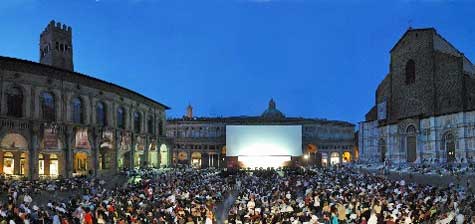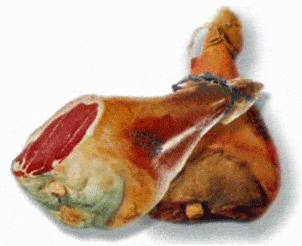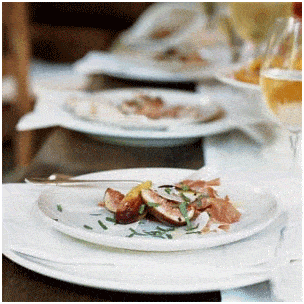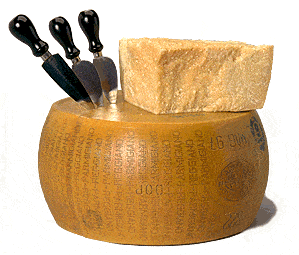
Picture courtesy of Cultura d Europa
By Judy J. Pinegar
Emilia-Romagna is the heartland of central Italy, with a reputation as a great gastronomic center, sometimes called the “bread basket” or the “fruit bowl” of Italy. Pigs still outnumber humans in many areas. So there is no surprise that all of the festivals in the area have food as one of the main draws, and some of the festivals are all about a particular food
March – Fiera di San Guiseppe e Sagra della Seppia (Fires of Spring and Festival of the Sepia) is held in the town of Pinarella and beaches of Cervia. Every year this traditional celebration called a Focarina, the burning of the winter months and greeting the coming of spring. Large fires are built, and the festival ensues, accompanied by singing, music shows, animation and traditional markets. At night fireworks are sent up over the sea. The food focus is on seafood including sepia, a genus of cuttlefish which also produces the dark pigment used in making the brown color sepia.
June – Fiera di San Giovanni (Feast of St John) La Fiera di San Giovanni è l’evento più importante per Spilamberto; si svolge ogni anno a cavallo del 24 giugno, festa di San Giovanni Battista, patrono della città., held in the town of Spilamberto, honors St. John the Baptist, the patron saint of the city, but also presents the local agricultural products, crafts and foods of the area. The festival includes performances, sports competition, exhibitions, and children’s workshops. The historic street market, Obici contains many original and quirky items for sale. Si tratta di un’occasione per celebrare il patrono ma anche per presentare i prodotti tipici del territorio e l’attività delle numerose associazioni locali, che ogni anno si impegnano attivamente insieme all’Amministrazione Comunale per valorizzare la manifestazione.The Fiera di San Giovanni is also a trade show for poultry, rabbits, and pigeons is one of the largest and most important shows in all Italy.
August – Ferrara Buskers Festival, held in the city of the same name draws 800,000 onlookers, is the largest show in the world dedicated to “the art of the road”. The name Buskers refers to street-performers: music, theater, dance, juggling, etc. They come from around the world. All are well-known and well-respected in their trade in their home countries, and have incredible and unique talents to share. Throughout the festival it seems anything is possible at any time. They are only paid by the generosity of the onlookers, so bring your change!
September – Sagra della Polenta e dei Frutti del Sottobosco (Festival of Polenta and Berries), held in the city of Novafeltria, the air is perfumed with the smell of polenta topped with wild boar sauce, sausage or mushrooms. The polenta is made from stone ground corn, at least 13 different species! Frutti del Sottobosco means all those delicious goodies hiding in the undergrowth… like local porcini mushrooms and truffles. Other specialties include piadina, a thin Italian flatbread cooked on terra cotta,and homemade jams all washed down with the local Sangiovese wine.
September – Festival del Proscuitto di Parma (Festival of the Ham), held in the city of Parma brings a typical 100,000 visitors, who consume 1,000 hams, and 60,000 meals. For the occasion the Piazza Garaboldi is turned into a open air Proscuitteria, where the King of Hams is served together with the best wines of the area. There is also street theatre, stalls of local products, and painting exhibitions. In a tradition called Finestre Aperte (Open Windows), the ham factories give tours to let thepublic watch the production process and take part in free tastings. They explain the production secrets of the pig legs that, due to a magical combination of climate, tradition and passion, become Parma Ham.
October – Fiera del Tartufo Bianco di Sant’Agatha Feltria (White Truffle Fair of Sant’Agatha Feltria), held in the medieval town of that name, and also called the Truffle City, the festival welcomes over 100,000 people annually with intoxicating smells and exciting treats for gourmets. There are cultural exhibitions, performances, and entertainment. Other foods from the area are also featured, mushrooms, chestnuts, honey herbs and products of sheep farming.
November – Zucca in Festa (Pumpkin Festival) held in the municipality of Delta, has organized events and markets of local crafts and products, food stands, and everywhere specialties made from pumpkin, soups, stuffing, in pasta or bread, baked, fried and cooked into sweets. The pumpkin is called a “violin” and has firm, sweet orange flesh. They even make a distilled pumpkin grappa.
Written by Judy J. Pinegar
Writer and is available to write for your blog or magazine
You may contact her at Email Judy
For all your real estate needs call or email:
John J. O’Dell
Real Estate Broker
O’Dell Realty
(530) 263-1091
Email jodell@nevadacounty.com


